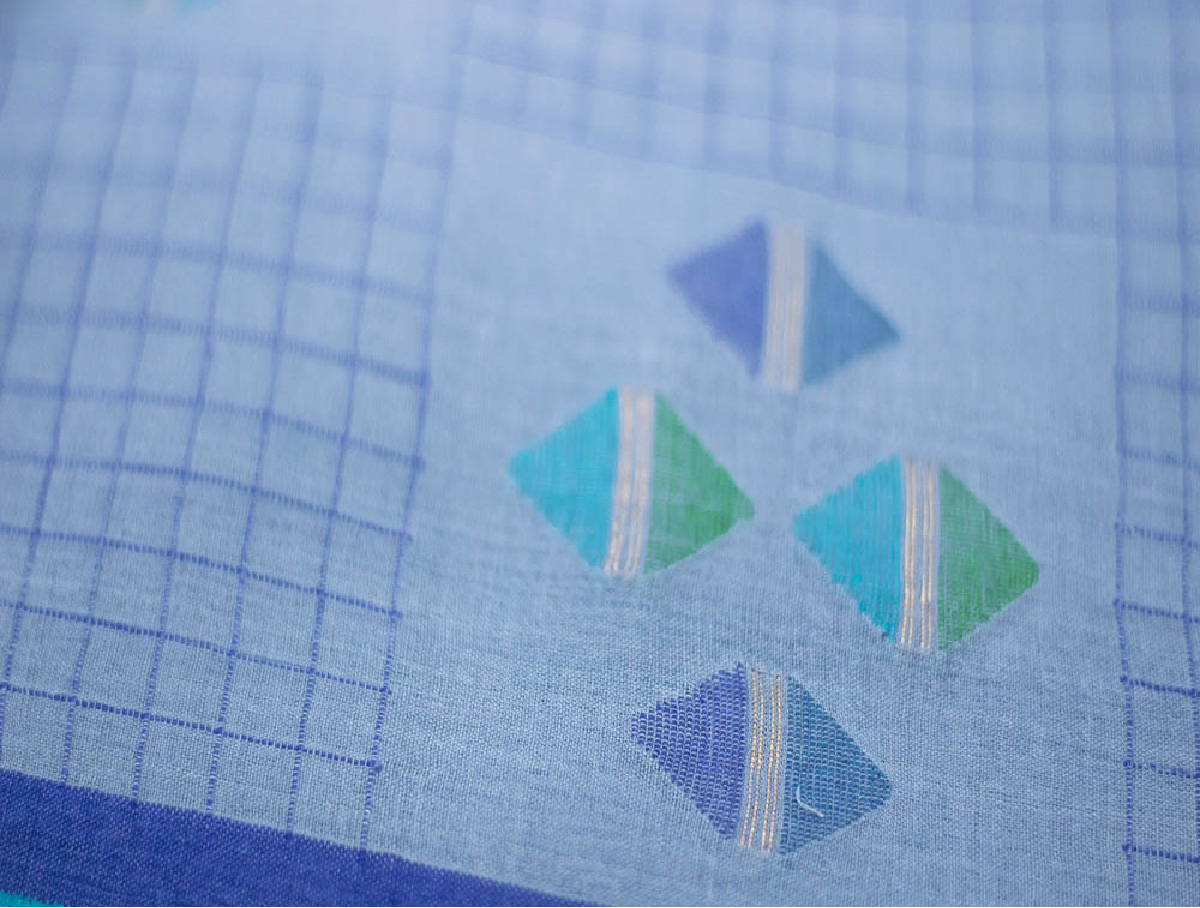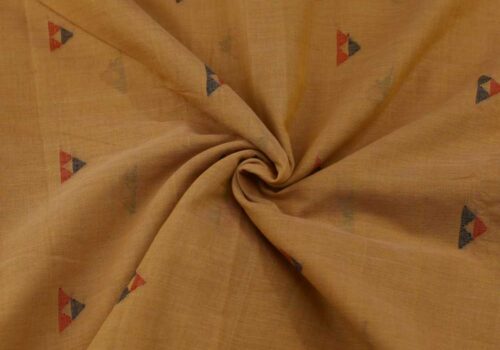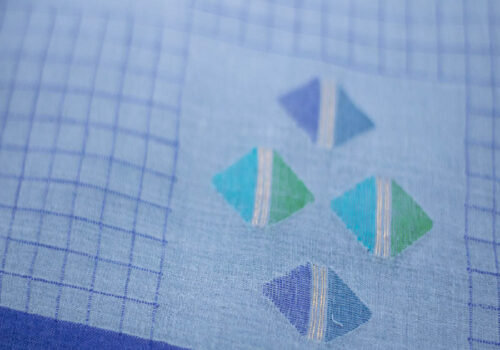Summary
Jamdani is a type of very fine woven muslin fabric. The art of Jamdani weaving has been practised in the Bengal region—nowadays Bangladesh and East India—since centuries. The characteristic designs are made in a supplementary weft technique of weaving. The traditional art of Jamdani weaving was included in the UNESCO Intangible Cultural Heritage list in 2013.
The name, Jamdani, is of Persian origin and comes from the word jam meaning flower and dani meaning vase, descriptive of the floral motifs. The weaving is time-consuming and labor-intensive because of the richness of its motifs, which are created directly on the hand loom using the discontinuous weft technique.
What does Jamdani look like?
Discover Jamdani crafts from The Craft Atlas and other digital collections in the image gallery.
Technique
How is Jamdani done?
This is a supplementary weft technique of weaving, where the designs are produced by a non-structural weft, in addition to the standard weft that holds the warp threads together. The standard weft creates a fine, sheer fabric while the supplementary weft with thicker threads adds the intricate patterns to it. The result is a complex mix of different patterns that appear to float on a shimmering surface. The pattern is drawn on a graph paper and placed underneath the warp for guidance while weaving. Traditionally a mixture of cotton and gold thread was often used. After weaving, the Jamdani fabric is treated with rice starch to soften it.
Where does Jamdani come from?
Jamdani is a craft from







